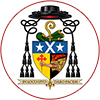Dame Margaret Truran is a nun of the Benedictine Monastery of Santa Cecilia in Trastevere in Rome. She is the founder of Rome-based "Cantantibus Organis" training course in Gregorian Chant.
Read more about Dame Margaret Truran.
TEMPUS PER ANNUM: GREGORIAN CHANT FROM THE MONKS OF PLUSCARDEN ABBEY
This is a major CD, presenting twenty-nine chants intrinsic to the annual liturgical cycle that have not often been recorded. The singing, united, flowing and deeply musical, does them full justice. The text of each, with translation, is provided in the accompanying booklet, together with comments on the history of its composition and its use over the centuries.
Gregorian chant is the sung Word of God. When the words of scripture are sung out, proclaimed with due rhythm and melodic pattern, as opposed to being simply read, an event takes place. The Word becomes alive, incarnate. There is an encounter with God. Though a CD cannot help but present something that has already taken place, the monks’ sensitivity to prayer enables us to eavesdrop on that past event, their encounter with God.
This dimension is evident from the beginning. The joyful melody of the Introit Laetetur cor (no. 1) rises and soars in the first phrase, next seeks God in the depths, and combines both movements in the last phrase which carries the promise of the beatific vision, of seeing God face to face, humanity’s greatest longing. The understanding apparent in the singing opens our ears and hearts to the message of the text, the happiness to be found through seeking God.
A brief pause between each item allows the chant to linger in the mind and memory, enhancing the prayerful atmosphere. The musical interpretation, guided by the signs in the oldest manuscripts of Gregorian chant that preceded the invention of the stave, reveals rhythmic and other nuances not apparent in the square notation found in printed books. This transforms the singing of, for example, the Alleluia De profundis (no. 11). The insights gained from the science of “semiology” are never, however, carried to the point of exaggeration. The Alleluia Confitemini (no. 4), a masterpiece, is marvellously sung with just the right degree of expression.
Among the highlights on the CD is the troped Kyrie Fons bonitatis (no. 2). It offers a fine example of how to sing repeated melismata; instead of dragging, as they might, they draw us into a perpetual movement of lifting our voices to God.
It is good to find two Offertory chants, Recordare (no. 12) and Oravi (no. 22). The Offertories, among the most contemplative and beautiful compositions of Gregorian chant, have often been dropped from the musical repertoire through a misunderstanding. The Roman Missal no longer requires the celebrant to say the antiphon if it is not sung, as he must do in the case of the Introit and Communion antiphons. This is for a practical reason; he is occupied at the altar. However, the Offertory chant, even if no longer obligatory, has not been abolished; indeed the General Instruction on the Roman Missal gives renewed prominence to the Offertory procession, accompanied by a song. The singing of Oravi is worth listening to again and again. The melody is wonderfully expressive of the words Exaudi (“Hear”), illumina faciem tuam (“lift up the light of your face”) and propitius intende (“look with forgiveness”).
The Gloria of Mass XI (no. 21) is another masterpiece, requiring artistry to convey the dance between the two fundamental notes of the second mode, the final D and the dominant F, and the syncopation of accented and non-accented syllables. Occasionally the flow of the singing is a little unsteady, and the musical line not quite carried through, but the phrases are beautifully tossed back and forth and the diction is clear.
In addition to the chants drawn from the Mass repertoire, some hymns from the Liturgy of the Hours provide variety. The singing of the Vesper hymn Rerum Deus (no. 19) is sublime; Lucis Creator (no. 7) is also beautifully rendered. A flowing, sure momentum conveys the solemnity of the Te Deum (no. 24), sung to the melody given in the third volume of the Antiphonale Monasticum (2007). This, as is true of several other items, is accompanied unobtrusively on the lovely Tickell organ.
Through the beauty of the chants presented, and the ease and resonance of the singing in the fine acoustic, this CD lifts us to another world.
Sr Margaret Truran OSB
